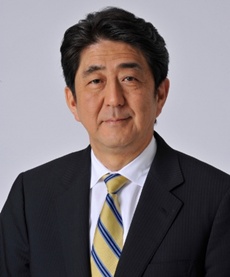Japan’s cabinet approves $53 bn in stimulus spending
12 Dec 2013
 Japan's cabinet has approved billions of dollars of stimulus spending in a supplementary budget aimed at reviving a faltering economic recovery and cushioning the impact of a sales tax hike next April.
Japan's cabinet has approved billions of dollars of stimulus spending in a supplementary budget aimed at reviving a faltering economic recovery and cushioning the impact of a sales tax hike next April.
The ¥5.5 trillion ($ 53 billion) in fresh stimulus approved today is expected to create at least 250,000 jobs and is heavily weighted toward new investments inconstruction projects, PTI reported. The plan also included ¥600 billion ($ 5.8 billion) in payments to home buyers and one-time payments of ¥10,000 ($ 100) per child to low and middle-income families.
Prime minister Shinzo Abe has proposed the extra stimulus as a countermeasure to the 3-percentage point hike in sales tax to 8 per cent in April.
Parliament is expected to approve the stimulus in early 2014, since Abe's Liberal Democratic Party and its coalition partners hold majorities in both houses.
Japan's economy, the world's third-largest, exiting recession in late 2012 clocked a brisk 4.3 per cent growth in the first quarter of the year. The pace of expansion was however down to 1.1 per cent in the third quarter as corporate investment continued to be sluggish and exports were hurt by lacklustre growth in emerging economies.
Meanwhile a draft of a new national security strategy released yesterday calls for the country strengthening its defence capability and seeking a larger regional role as the balance of power shifted with the rise of China and the decline of American influence, The New York Times reported.
The draft, written by a group of experts appointed by Abe, calls for forging closer military ties with the US, which had guaranteed Japanese security after the second world war, and still has 50,000 military personnel stationed in country. At the same the time, the report said, Japan must ''strengthen its own capabilities and expand its own roles'' by beefing up its anti-missile defences and its ability to defend the freedom of navigation in surrounding seas, in a reference to China's growing naval presence in the region.
The new strategy does not call for a sudden buildup in forces, and it appeared to go well with the gradual increase in Japan's willingness and ability to defend itself in recent years, especially, in the backdrop of a row which erupted over some islands, with China.
According to the newspaper, the draft offered a glimpse of how far Japan had come from a ''firmly pacifist nation that just two decades ago was still reluctant to admit it had even a limited military.''
.webp)

.webp)


.webp)

























